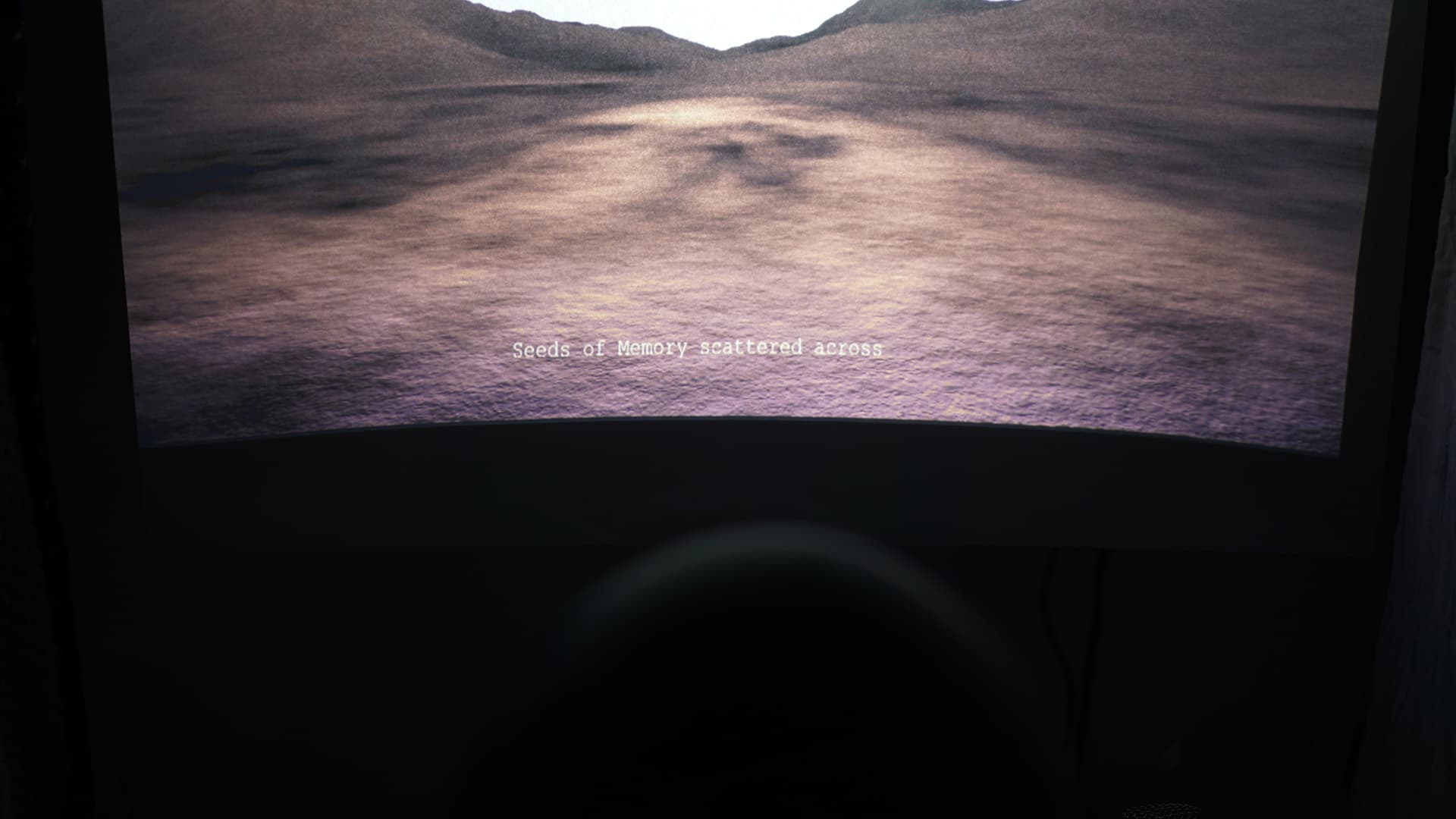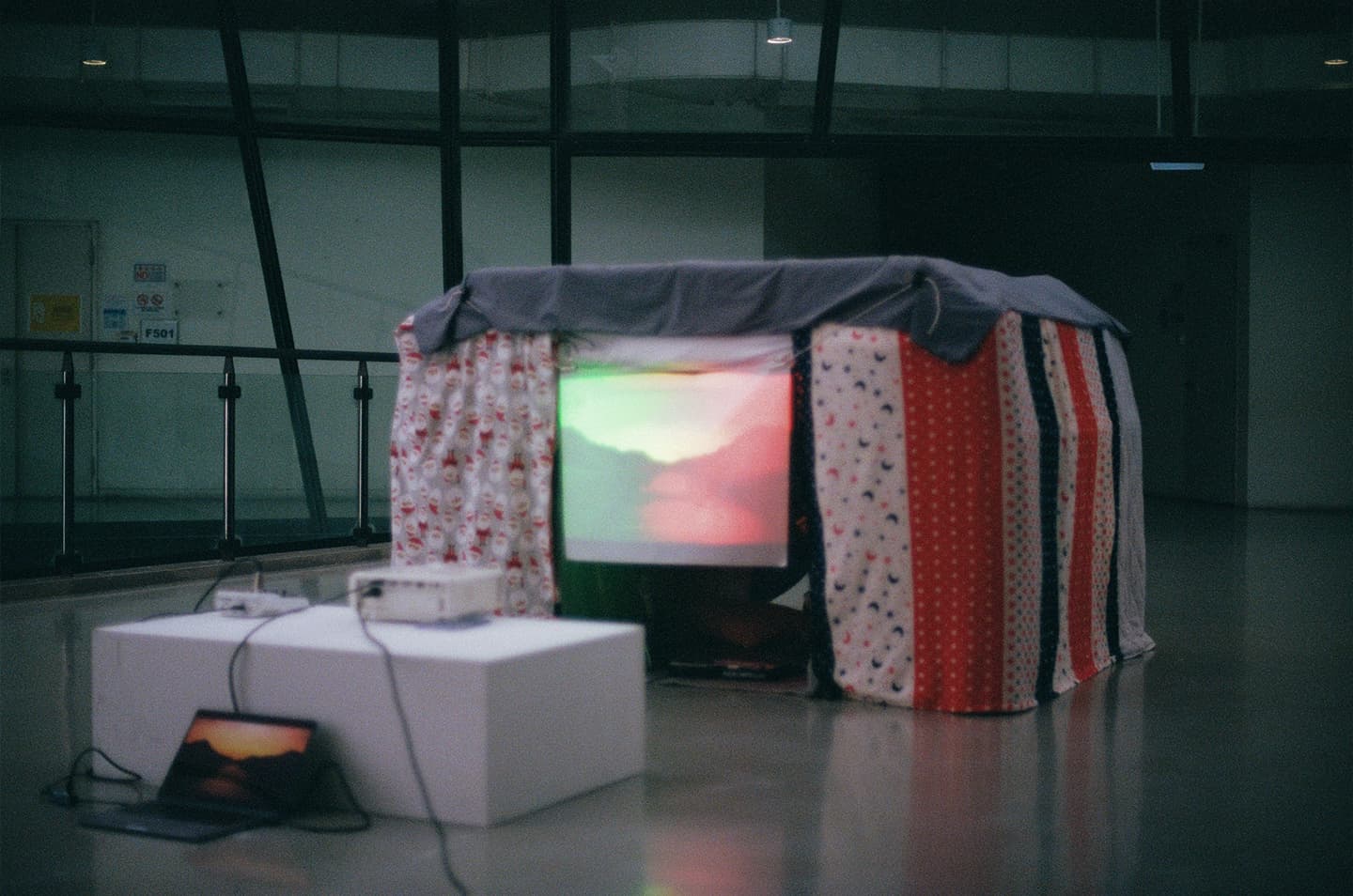Findings
Our group wanted to create an immersive experience that connected us one step closer to the audience. Since the project’s topic of “home” is highly personal, it was important for us to find a way in which different people coming from different backgrounds could relate and interact to essentially the same audio-visual experience.
The goal for this project was not to represent home in a literal sense but rather to create a universal experience that would bring each person to expand upon their own idea of home. Therefore, the addition of interactive elements became a fundamental part of our project, as the reactive visuals would give participants a more connected experience.
In the execution of our project, we used a combination of collected data, in the form of object files created through surveys, and real-time data, collected from audio and interactive MIDI inputs. Instead of our project’s direction being entirely dependent on these two types of collected data, the data within the project acts as an aid, helping to shape the experience into a more personalised journey.
Insights we gained
Hwain
When first starting this project, I thought that the goal existed somewhere around trying to “imitate home.” However, I realised that the entire process was an act of “creating home itself.” For the “Night” landscape, we wanted to create a “campfire” bright enough to light up the dark sky. Looking at the people surrounding and admiring our finished project, it seemed as if the light coming from the projector became that “campfire,” making me realise that “home” is not a static concept, but rather, it is the people around us, and the memories with them that we carry in our hearts.
Nasya
Being an international student and living far away from home for the first time, the topic of this project became a personal one for me. The idea of home is something that is relevant to anyone, but specifically more to those who had to be far away from it. As this project progresses, I started to realise that it is not “home” that we’re representing through it, but rather it acts as a reminder and a form of reflection for the audience of their own notion of home. At the end, seeing this idea and purpose come to live in our final project was very fulfilling.
Ummi
Our team's strong teamwork was a standout. Each member's skills led to a seamless execution and a shared learning experience. Deciding to construct a fortress with a home concept represented our group's objectives. Our classmates' feedback and thoughts about the interactive simulation encouraged connections and nostalgic reflections. This project was made genuinely great by the team's consistent support, whether it was in sharing knowledge or fixing problems. In conclusion, I went from struggling with new technologies to project success through personal development and the value of teamwork. Our proposal resonated well with our audience because of the collaborative environment.
Design decisions
A pivotal aspect of our project involved crafting interactive elements that served as real-time data inputs, enriching and personalising the audio-visual journey. These interactive elements helped shape the overall experience, and were placed in each of the four visual landscapes.
-
First Visual: Dawn For this scene, we made it so that when the MIDI knobs are turned, the roughness and height of the background mountains would change. This aligned with the idea of this Dawn landscape representing an unstable state existing “before the beginning” - being sharp, cold and incomprehensible.
-
Second Visual: Sunrise This scene was much more direct and simple. There wasn’t a big transition in the visual density from the Dawn visual, and we thought it would be nice to emphasise this with a smoother color-based transition. We wanted participants to be able to turn the sun on and off by adjusting the gamma level, which was done by moving the MIDI keyboard’s joystick. This gamma difference created a smoother transition from the Dawn’s dark visual.
-
Third Visual: Sunset Our project had a narrative of "droplets of words" nourishing a barren land, so it became essential to ensure that the raindrops responded to and appeared based on the viewer’s spoken words. Real-time audio was collected from a microphone, triggering the “droplets” within the digital landscape. Not only did this element add an interesting layer to the project, but it also strengthened the project’s overarching visual and poetic narrative.
-
Fourth Visual: Night With the "night visual," we incorporated a playful touch by utilising the MIDI keyboard's joystick to manoeuvre the 3D objects sideways, forward, and backward. This addition not only brought a whimsical twist but also accentuated the smooth texture of the objects through enhanced light reflection, creating a visually compelling element.
Challenges
Most of the challenges we faced were of technical issues, specifically making things “work” in TouchDesigner. One of the troubleshooting errors that we encountered was regarding the audio-reactive raindrops on the third “Sunset” scene. At one point in the process, a glitch had appeared where one “droplet” falling would trigger two ripples instead of one.
After consulting with Jo, we found out that the problem lies on the “noise9” node being generated in a single noise, causing two noises to be generated on the output. After distributing it equally into two noise nodes, we were able to fix this “jumping” glitch, and made the audio-reactive raindrops function without any problem.
Other than this, there were also difficulties in transitioning from the Point Cloud brief towards a project centred around creating an immersive simulation. In a short period of time, we delved into the technicalities of two very different areas, and had to gather a comprehensive understanding of both in order to expand on the TouchDesigner tutorials, and transform them into a unique and personalised expression of our creative vision.
Feedback
One of the earliest feedback that we got was regarding the overall visuals. The initial landscape that we presented felt too extraterrestrial and desolated, which is the opposite of our theme of home. Seeing the visual landscape didn’t make the viewers feel at peace, instead, it brought them the furthest away from the feelings of home and comfort, which is not what we wanted. However, we knew that this first visual would only be the starting point for our other visuals.
After further experimentations with the landscape, and developing four different versions (Dawn, Sunrise, Sunset, and Night), our project began to come together neatly and has since received only positive feedback. Our interpretation of the topic got much better as the visuals developed and came to its final state. The addition of interactive elements such as the audio-reactive visual and MIDI button controls also made the project more engaging. We saw enthusiastic responses from almost everyone who tried out the experience.

Achievements
When our project was being carried out, our team achieved success. It was due to our careful planning and strong teamwork that the entire process went really smoothly. Upon navigating the complexities of the project, we were happy to discover that our set-up went just as planned. With every aspect falling into place with ease, the successful execution demonstrated the commitment and skill of every team member.
One notable aspect of this accomplishment was the effective use of visual elements. We used a creative approach to the flawless presentation of our work on the projector: we were able to project it from the back. What could have been a typical presentation was made into an aesthetically fascinating experience by this extra layer, which also displayed our team's technical skill and inventiveness. The careful thought that went into the projection process demonstrated our commitment to going above and above, making sure that our project was unique from the others.






